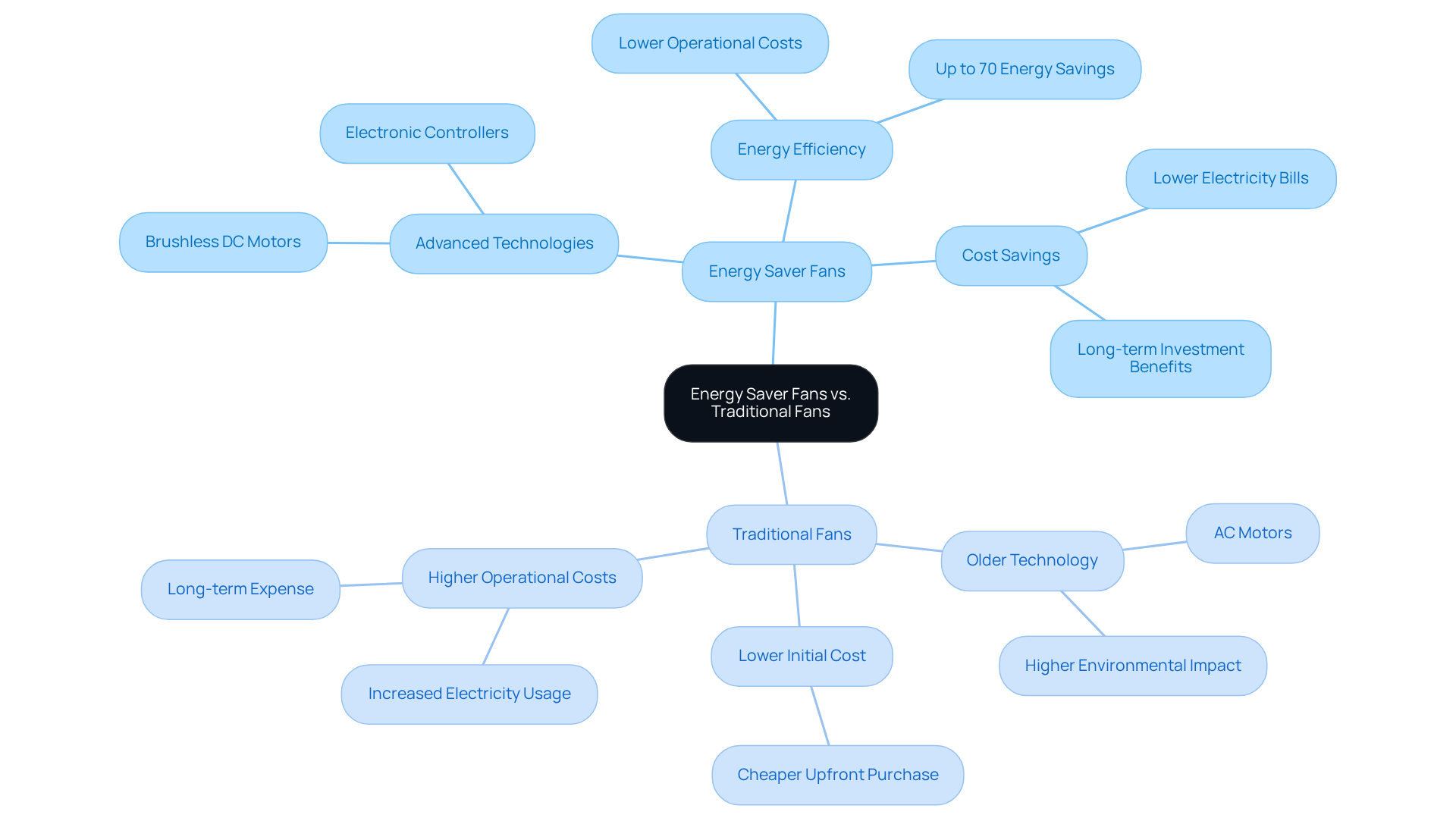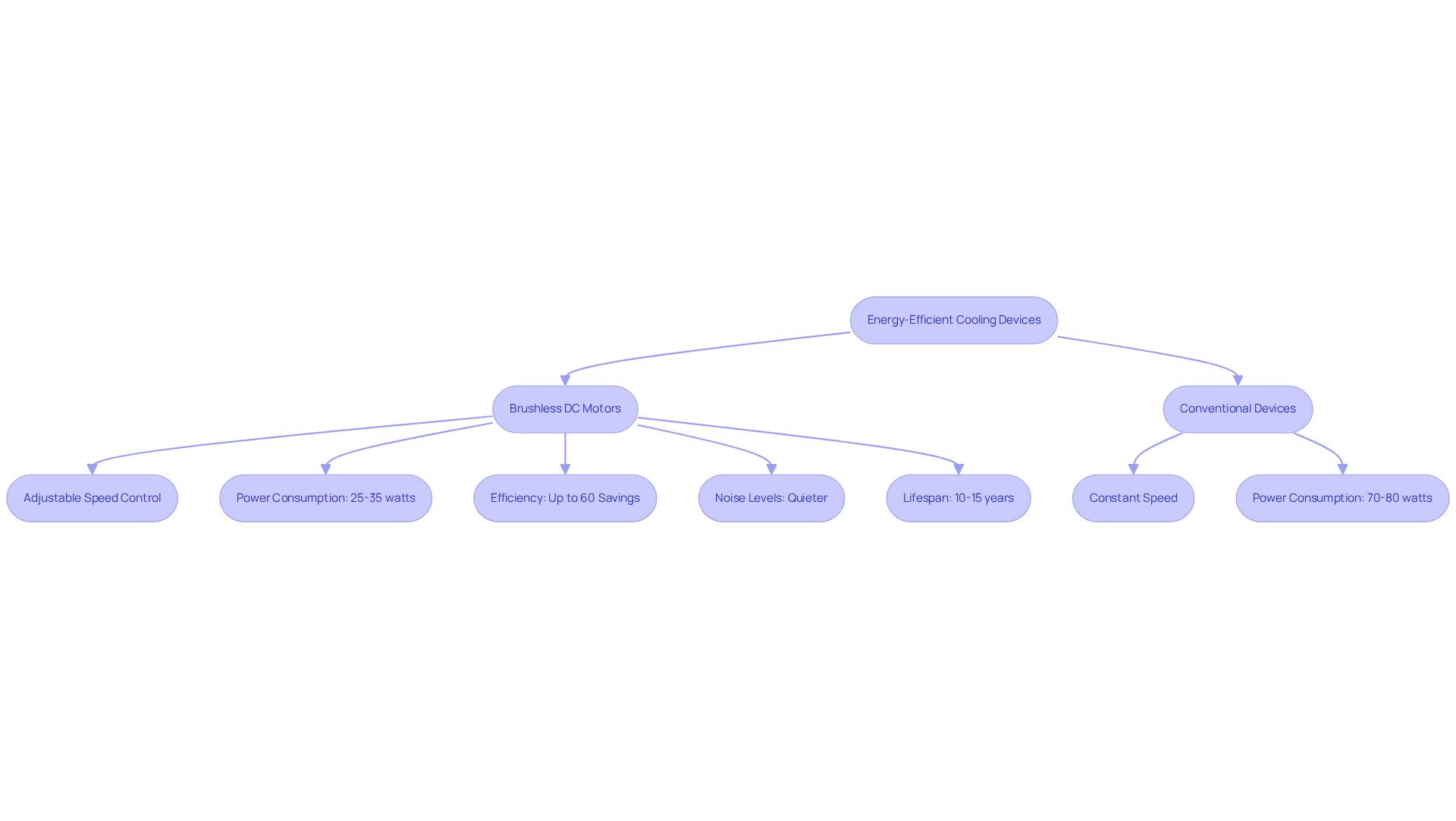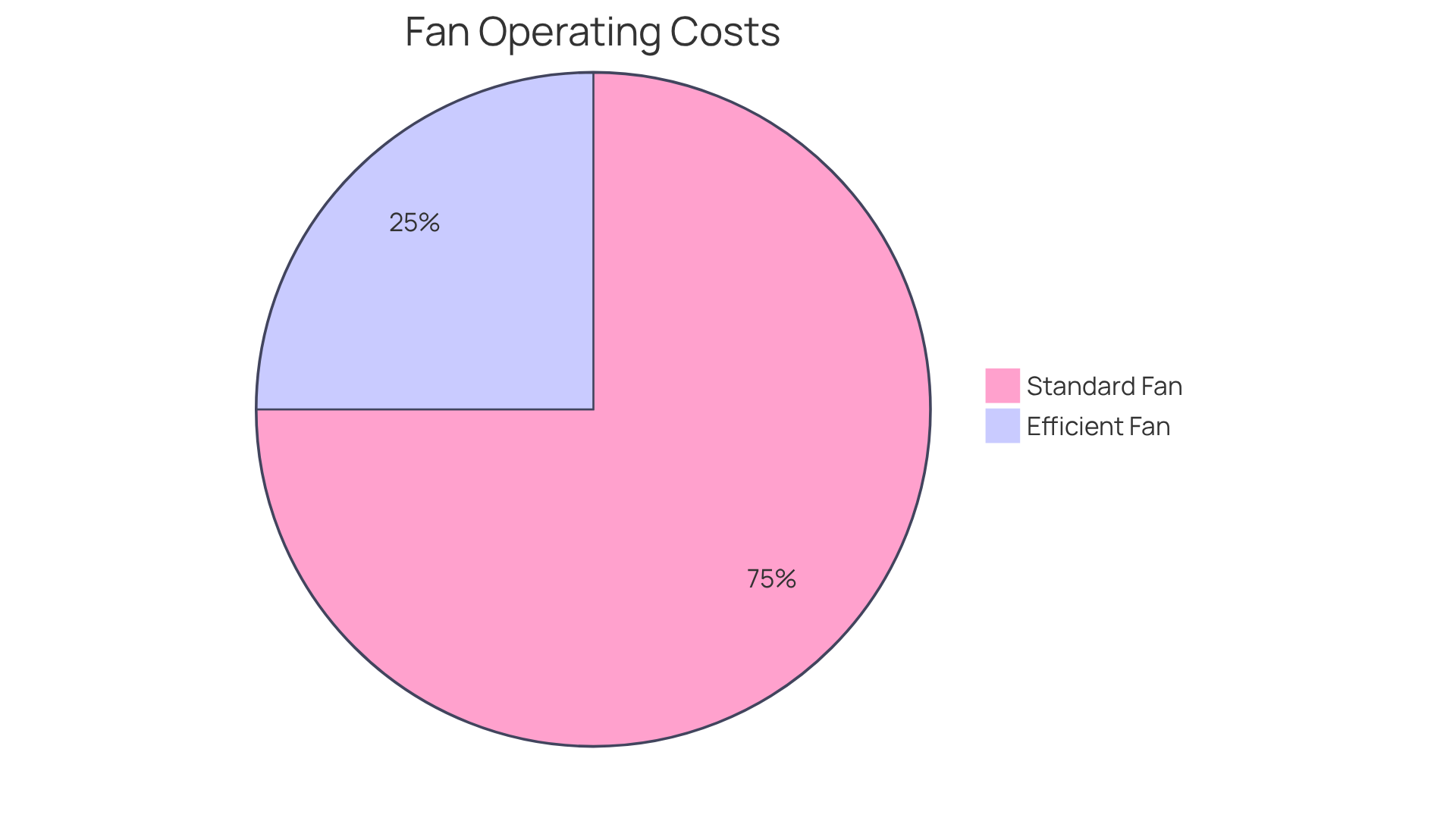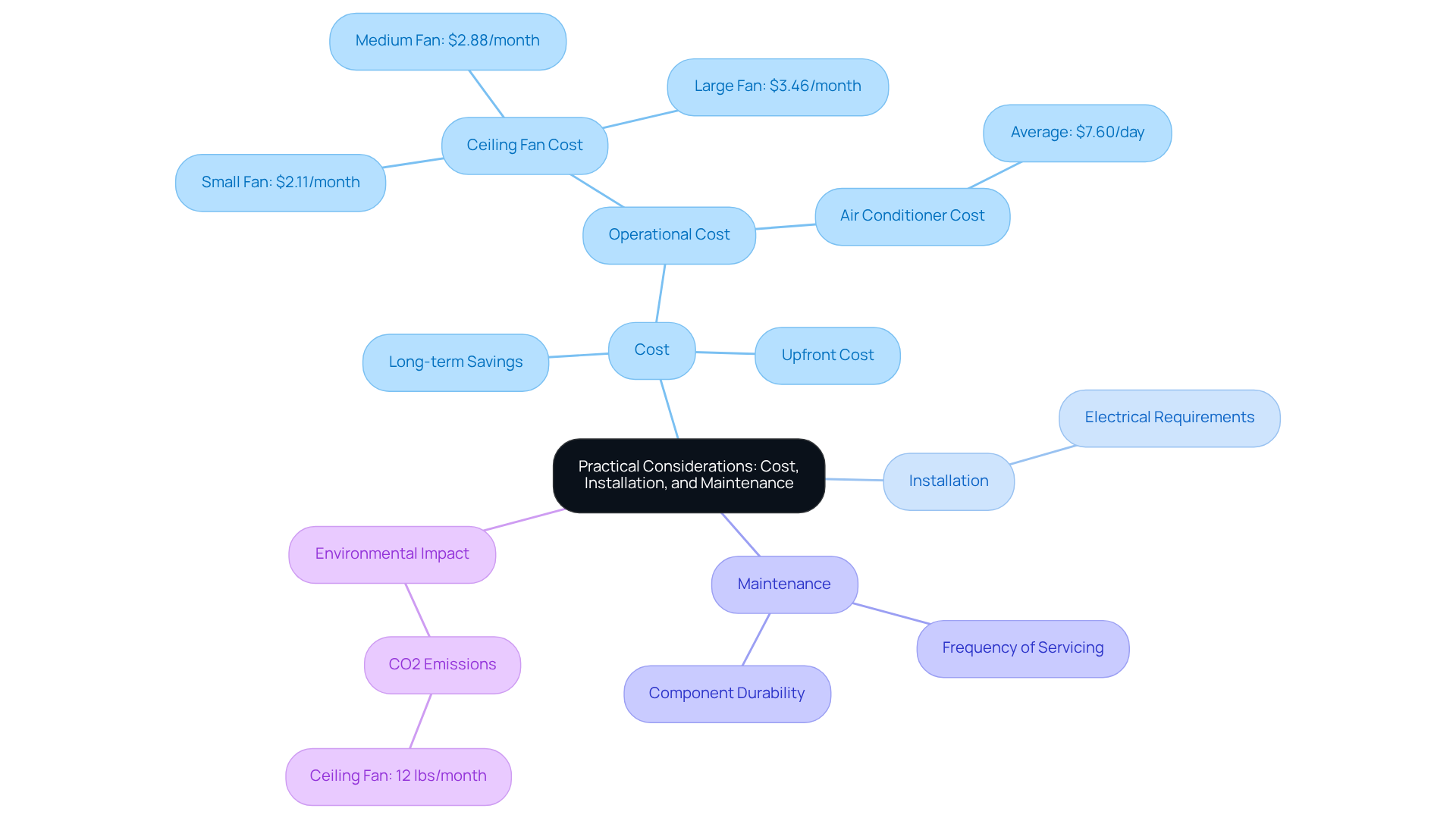Overview
This article presents a detailed comparison between energy saver fans and traditional fans, emphasizing the superior efficiency and cost-effectiveness of energy saver fans over time.
Leveraging advanced technology and reduced energy consumption, these fans significantly outperform their traditional counterparts.
The analysis is supported by comprehensive data on operational costs, energy savings, and maintenance requirements.
Although the initial investment for energy saver fans may be higher, the long-term savings, coupled with substantial environmental benefits, position them as the optimal choice for consumers seeking both economic and ecological advantages.
Introduction
Energy consumption remains a pressing concern as households and businesses strive to reduce their environmental footprint while managing costs. Energy saver fans have emerged as a compelling alternative to traditional fans, offering remarkable efficiency and significant long-term savings. However, the initial costs of energy saver fans are often higher, leading to the critical question: are these fans truly worth the investment when compared to their conventional counterparts?
This article delves into the mechanics, efficiency metrics, and overall value of energy saver fans versus traditional fans. By examining these factors, we aim to provide insights that empower consumers to make informed decisions in their quest for effective cooling solutions.
Understanding Energy Saver Fans and Traditional Fans
Energy-efficient ventilators, often designed as energy saver fans and equipped with advanced technologies such as brushless DC motors, are intended to optimize power usage while providing effective cooling solutions. Gagner-Toomey Associates, recognized as the world’s largest manufacturer of both standard and custom air-movers, offers a comprehensive range of DC input Tube Axial units and Centrifugal Blowers. These innovative products, like the energy saver fan, can significantly reduce energy consumption—by as much as 70%—when compared to traditional units that typically utilize older AC motor technology.
While conventional models may present a lower upfront cost, they incur higher operational expenses over time due to their inefficiency. This understanding of the distinctions between energy-efficient models, such as the energy saver fan, and traditional models is vital for electronics engineers and consumers alike, as it enables them to make informed decisions regarding their cooling solutions.
Particularly when considering Gagner-Toomey’s pioneering contributions to thermal management, the advantages of investing in energy-efficient technologies become increasingly clear.

Operational Mechanisms: How Each Fan Type Works
Energy-efficient cooling devices, including the energy saver fan, utilize brushless DC motors that provide adjustable speed control tailored to specific cooling needs, leading to significantly reduced power consumption. These motors adjust their speed based on cooling requirements, consuming only 25-35 watts, in stark contrast to conventional devices that typically operate at a constant speed and use around 70-80 watts.
This crucial difference in operation not only affects efficiency—where energy-conserving devices can yield savings of up to 60%—but also influences noise levels and longevity. Energy-saving devices are generally quieter and more durable, boasting a lifespan of 10-15 years with proper maintenance, thanks to minimized wear on their components.
HVAC experts emphasize that the use of an energy saver fan with adjustable speed is essential for optimizing power consumption, particularly in environments where cooling demands fluctuate. Furthermore, while the initial cost of BLDC devices may be slightly higher, the return on investment is less than two years, making them a financially prudent choice for both residential and commercial applications.

Energy Efficiency Metrics: Comparing Performance and Savings
When assessing power efficiency, it is crucial to recognize that energy-conserving devices can utilize as few as 30 watts, whereas standard models may require over 75 watts for comparable airflow. This disparity leads to significant savings over time; for instance, operating a power-efficient fan for 8 hours daily can cost approximately $10 per year, compared to $30 for a conventional fan.
Furthermore, efficient cooling devices often meet ENERGY STAR standards, which signify their superior performance and potential discounts for consumers. This metric not only indicates lower operational expenses but also plays a vital role in reducing environmental impact, positioning efficient appliances as a more sustainable choice.

Practical Considerations: Cost, Installation, and Maintenance
Energy-efficient devices, despite their elevated upfront cost, offer substantial long-term savings on utility bills and reduced maintenance expenses, establishing them as a wise investment. Conventional models often require more frequent servicing due to their reliance on fossil fuels and less efficient motors. In contrast, eco-friendly units are constructed with robust components that endure less operational stress, resulting in lower maintenance needs. A ceiling fan typically incurs a monthly operational cost of approximately $2.11, demonstrating the cost-effectiveness of an energy saver fan compared to traditional models.
Installation for both types of fans is generally straightforward; however, saver fans may necessitate specific electrical configurations to optimize their efficiency. Installation experts recommend verifying that the electrical system can support the fan’s advanced features, including variable speed settings and built-in LED lighting, which contribute to energy conservation. As AAA Electrical Services highlights, ‘Start by spotting that ENERGY STAR label—it’s your shortcut to knowing the energy saver fan meets those tougher energy-saving standards.’
Ultimately, consumers should thoughtfully assess these factors alongside their budget and cooling needs to make informed decisions that align with their long-term energy efficiency objectives, such as choosing an energy saver fan. Furthermore, energy saver fans play a crucial role in reducing greenhouse gas emissions, with a ceiling fan generating approximately 12 lbs of CO2 monthly, further emphasizing their environmental advantages.

Conclusion
Energy saver fans signify a remarkable leap in cooling technology, offering an efficient alternative to traditional fans. By harnessing brushless DC motors, these fans optimize energy consumption while providing effective airflow, making them a prudent investment for both residential and commercial applications. The long-term savings and environmental benefits associated with energy-efficient models underscore the necessity of considering these options over conventional counterparts.
This article has delved into the key distinctions between energy saver fans and traditional fans, elucidating their operational mechanisms, energy efficiency metrics, and practical considerations such as cost and maintenance. Energy saver fans not only consume less power but also present lower operational costs and diminished maintenance needs, ultimately culminating in substantial savings over time. The comparison highlights that while the initial investment may be higher, the return on investment is realized swiftly, often within two years.
Given the increasing emphasis on energy efficiency and sustainability, selecting an energy saver fan transcends mere financial decision-making; it represents a commitment to reducing one’s carbon footprint. As consumers become increasingly cognizant of their energy consumption and its environmental ramifications, opting for these advanced cooling solutions is a proactive step towards a more sustainable future. Embracing energy-efficient technologies such as energy saver fans aligns with broader objectives of energy conservation and environmental stewardship, rendering it a choice that benefits both the individual and the planet.
Frequently Asked Questions
What are energy saver fans?
Energy saver fans are energy-efficient ventilators designed to optimize power usage while providing effective cooling solutions, often utilizing advanced technologies such as brushless DC motors.
How do energy saver fans compare to traditional fans in terms of energy consumption?
Energy saver fans can significantly reduce energy consumption by as much as 70% compared to traditional fans that typically use older AC motor technology.
What are some benefits of using energy saver fans?
The benefits of using energy saver fans include lower operational expenses over time due to their efficiency and reduced energy consumption compared to conventional models.
Why might traditional fans have a lower upfront cost?
Traditional fans may present a lower upfront cost due to their simpler technology and manufacturing processes, but they incur higher operational expenses over time because of their inefficiency.
Who can benefit from understanding the differences between energy-efficient and traditional fans?
Both electronics engineers and consumers can benefit from understanding these distinctions, as it helps them make informed decisions regarding their cooling solutions.
What is Gagner-Toomey Associates known for?
Gagner-Toomey Associates is recognized as the world’s largest manufacturer of both standard and custom air-movers, offering a comprehensive range of DC input Tube Axial units and Centrifugal Blowers.

